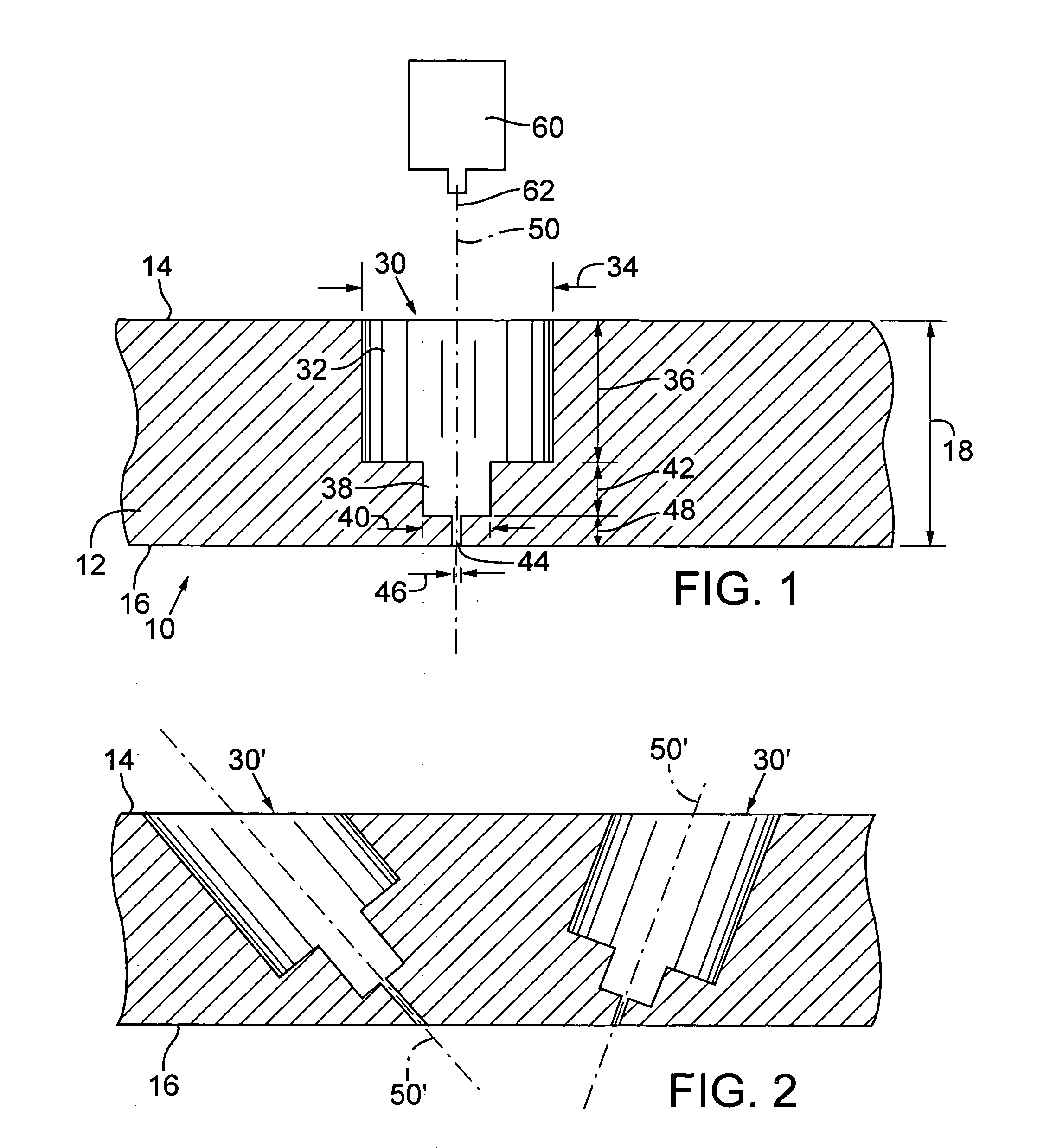Microporous filter
- Summary
- Abstract
- Description
- Claims
- Application Information
AI Technical Summary
Benefits of technology
Problems solved by technology
Method used
Image
Examples
example
[0019] An array of through holes, each of which having two hole steps, was formed in a 200 μm thick polycarbonate membrane as follows. A 355 nm laser output propagating through a 2× beam expander formed for each hole in the polycarbonate membrane a circular first hole step having a 50 μm diameter and a 180 μm-190 μm depth. The laser beam had a uniform power profile with a 220 mW level at 2 kHz Q-switch rate. A workpiece positioner operating at a 60 mm / sec scan speed moved the laser beam relative to the membrane to repetitively, sequentially scan the hole locations. During the sequential scanning process, the laser beam removed from the hole locations depth-wise portions of membrane material to partly form the first hole steps. The sequential partial removal of portions of membrane material allowed the plasma gases created during the hole step drilling process to escape and thereby ensure formation of high-quality holes. Several iterations of the scanning process sequence were carrie...
PUM
| Property | Measurement | Unit |
|---|---|---|
| Wavelength | aaaaa | aaaaa |
| Length | aaaaa | aaaaa |
| Thickness | aaaaa | aaaaa |
Abstract
Description
Claims
Application Information
 Login to View More
Login to View More - Generate Ideas
- Intellectual Property
- Life Sciences
- Materials
- Tech Scout
- Unparalleled Data Quality
- Higher Quality Content
- 60% Fewer Hallucinations
Browse by: Latest US Patents, China's latest patents, Technical Efficacy Thesaurus, Application Domain, Technology Topic, Popular Technical Reports.
© 2025 PatSnap. All rights reserved.Legal|Privacy policy|Modern Slavery Act Transparency Statement|Sitemap|About US| Contact US: help@patsnap.com



